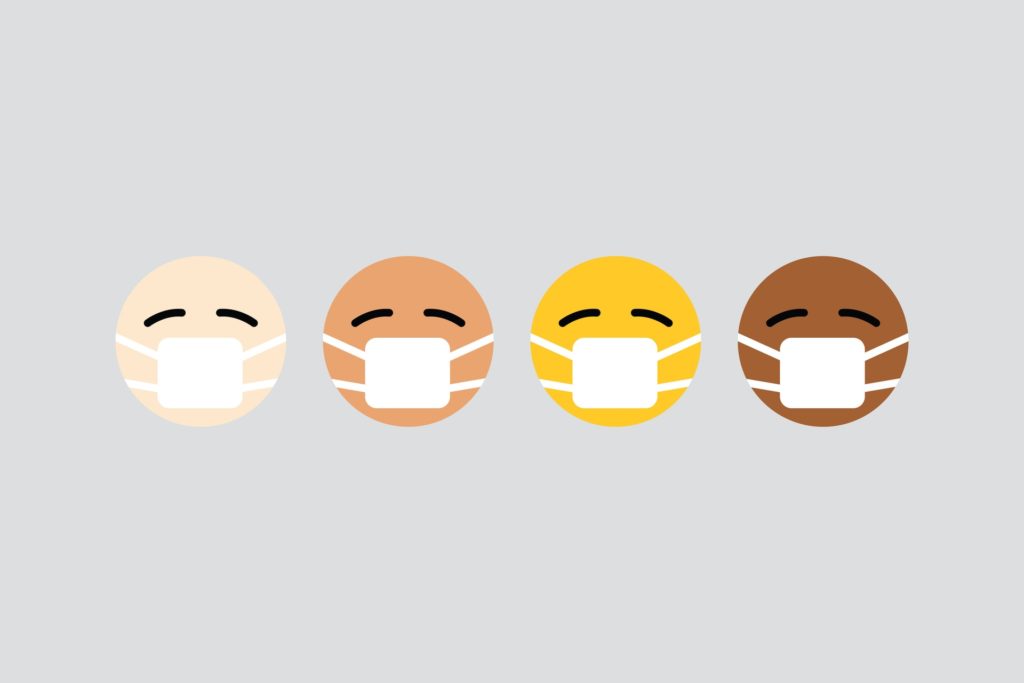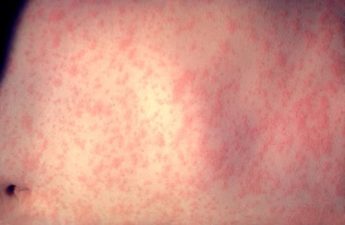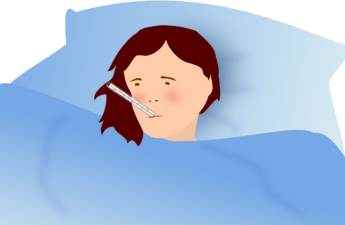From the Washington State Department of Health

The Washington State Department of Health now requires you to wear a cloth face covering in public when you cannot stay six feet (or two meters) away from others.
You must wear a face covering in indoor public settings like the grocery store, pharmacy, hardware store, health clinic, and other locations.
You should also wear a face covering outside if you cannot keep six feet (or two meters) away from other people at all times.
Face coverings can help prevent the spread of COVID-19 to others. When you wear a face covering, you help protect others around you.
A cloth face covering alone will not prevent the spread of COVID-19. You should still stay six feet (or two meters) away from non-household members when you wear a face covering, and wash your hands often with soap and water or use alcohol-based hand sanitizer.
Guidance
To help protect yourself and others against COVID-19:
- Wear a cloth face covering in public
- Wash your hands often with soap and water
- Wash your hands before you touch your eyes, nose, and mouth
- Wash your hands before and after you put on, take off, or adjust your face covering
- Stay six feet (or two meters) away from others who are not in your household
- Stay away from people who are sick
- Stay home when you are sick
FAQs:
- What is a cloth face covering?A cloth face covering is fabric that covers your nose and mouth. It can be:
- A sewn mask with ties or straps that go around the head or behind the ears
- Several layers of fabric tied around a person’s head
- Made from a variety of materials like cotton, fleece, or linen
- Factory-made or home-madeIf you would like to sew your own cloth face covering (mask) see: How to Sew a Face Mask
Please do not use N95 respirators or surgical masks as your face covering. They are needed by health care workers and first responders.
Do cloth face coverings stop the spread of COVID-19?
Cloth face coverings can reduce the release of virus particles into the air when a person with COVID-19 speaks, coughs, or sneezes. You can help prevent the spread of COVID-19 when you wear a cloth face covering, even if you don’t think you have COVID-19.
Who should wear a cloth face covering?
Most people should wear a face covering in public. Wear a face covering in indoor public spaces except when you eat, and outdoors when you cannot stay six feet (or two meters) away from others at all times.
Some people should not wear cloth face coverings:
- Children under two years of age
- People who have disabilities that:o Prevent them from comfortably wearing or taking off face coveringso Prevent them from communicating while wearing face coverings
- People who have respiratory conditions or breathing trouble
- People who have been told by a medical, legal, or behavioral health professional not towear face coverings
When should I wear a cloth face covering?
- You should wear a cloth face covering when you are in public with other people, especially indoors. You do not need to wear a cloth face covering in your home when you are only with people in your household, or when you are alone in your car. You do not need to wear one when you exercise outdoors with plenty of space. It’s a good idea to keep a face covering in your pocket in case you come across other people.
How do I care for my cloth face covering?
Wash your cloth face covering after each use, at least once per day. Use detergent and hot water. Dry the face covering completely on your dryer’s high heat setting. If you do not have a dryer, air dry the face covering in direct sunlight if possible. If you must reuse your face covering before you wash it, wash your hands after you put it back on and do not touch your face.
Throw away cloth face coverings that:
- No longer cover your nose and mouth
- Are stretched out or do not stay on your face
- Have damaged ties or straps
- Have holes or tears in the fabric
More COVID-19 Information and Resources
Stay up-to-date on the current COVID-19 situation in Washington, Governor Inslee’s proclamations, symptoms, how it spreads, and how and when people should get tested. See our Frequently Asked Questions for more information.
The risk of COVID-19 is not connected to race, ethnicity or nationality. Stigma will not help to fight the illness. Share accurate information with others to keep rumors and misinformation from spreading.
- WA State Department of Health 2019 Novel Coronavirus Outbreak (COVID-19)
- WA State Coronavirus Response (COVID-19)
- Find Your Local Health Department or District
- CDC Coronavirus (COVID-19)
- Stigma Reduction Resources
- Use of Cloth Face Coverings to Help Slow the Spread of COVID-19 (CDC)
- How to Make An Accessible, Deaf-Friendly Face Mask (HSDC)
| Have more questions about COVID-19? Call our hotline: 1-800-525-0127. For interpretative services, press # when they answer and say your language. (Open from 6 a.m. to 10 p.m.) For questions about your own health, COVID-19 testing, or testing results, please contact your health care provider. |
| To request this document in another format, call 1-800-525-0127. Deaf or hard of hearing customers, please call 711 (Washington Relay) or email civil.rights@doh.wa.gov. |


